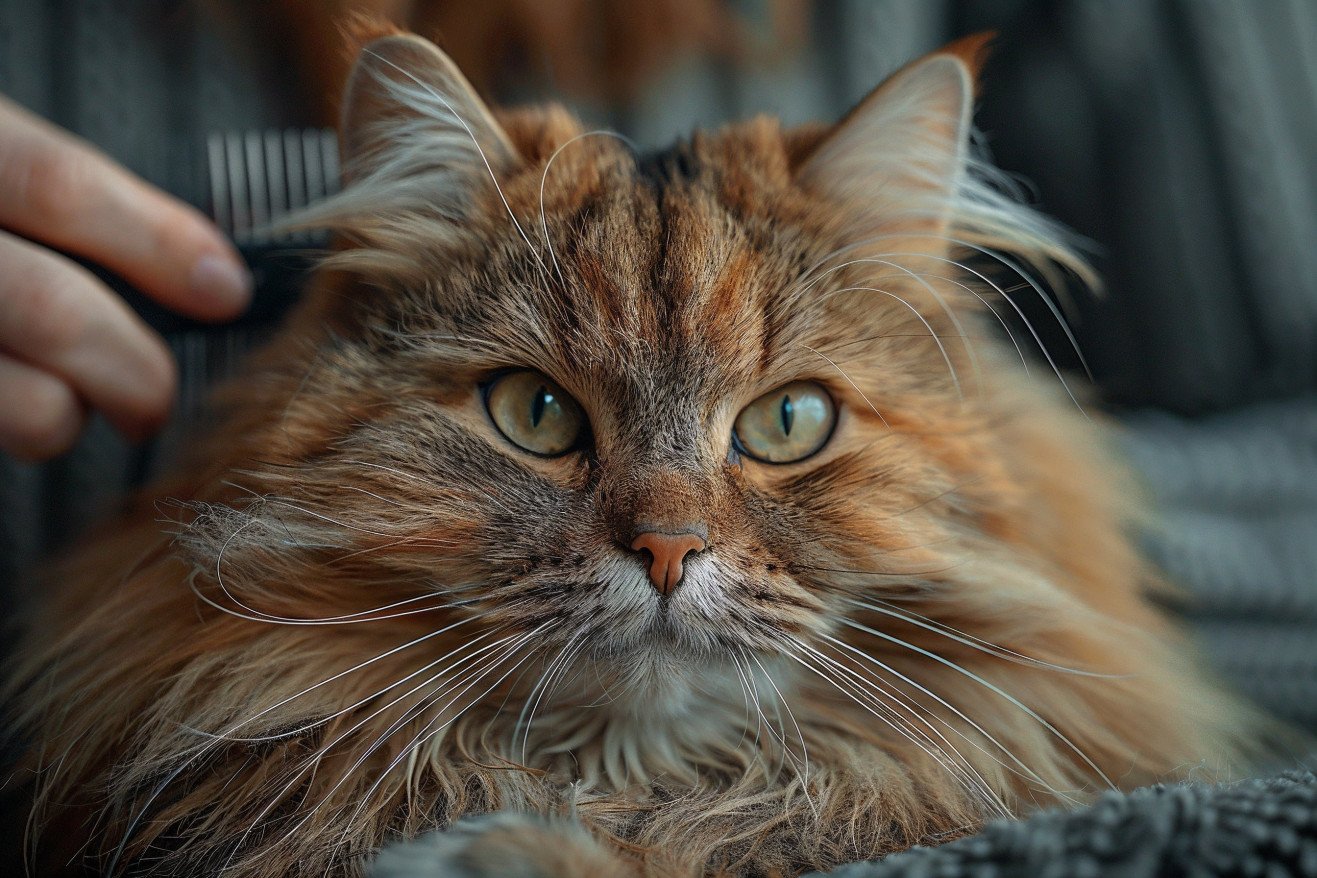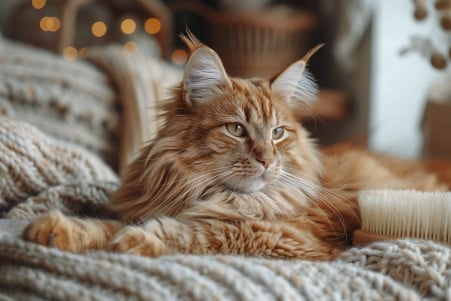Do All Cats Shed? What Science Says About Cat Hair and Grooming
26 March 2024 • Updated 25 March 2024

Even though we love our cats, the hair they leave behind is something that most cat owners have to deal with. While it's true that not all cats shed the same amount, how much a cat sheds depends on a variety of factors including breed, age, health, and even the time of year. For example, long-haired breeds such as Persians shed much more than short-haired breeds such as Siamese, but even hairless breeds such as Sphynx cats shed a little bit.
This article will look at studies by veterinarians, animal researchers, and cat owners to determine the differences in shedding among cat breeds. By the end of this article, you should have a better idea of the shedding patterns of different cats and some ideas on how to deal with the hair that your cat leaves behind. Whether your cat sheds a little or a lot, knowing what to expect can help you be a better cat owner and help you deal with the hair that you'll inevitably find around your house.
Do all cats shed?
Cats That Shed Less for People With Allergies
Although no cat is completely hypoallergenic, some breeds are better for people with allergies because they shed less and produce fewer allergens. Cats like the Siberian, Balinese, Oriental Shorthair, Devon Rex, Cornish Rex, Sphynx, and Russian Blue are often listed as hypoallergenic because they produce lower levels of the Fel d 1 protein, the main allergen in cat saliva and dander.
In addition to shedding less hair that can hold allergens, many of these cats also need less grooming, which can further reduce allergen exposure. The Sphynx's hairlessness and the Devon and Cornish Rex's short, low-shedding coats are examples of this.
However, it's important to note that even though these cats may be more tolerable for some people with allergies, no cat is completely hypoallergenic. People's reactions can vary, so it's a good idea to spend time with adult cats of a breed you're considering before adopting a kitten.
How to Groom Your Cat to Reduce Shedding
Brushing is the most effective way to reduce shedding and get rid of excess hair before it winds up all over your house. Chewy explains that the frequency of brushing depends on your cat's breed and coat length, but most experts recommend brushing at least once a week.
To make the most of your grooming sessions and ensure your cat is comfortable, it's important to use the right brush for your cat's coat. Cats.com suggests using a Furminator or rake brush to get rid of the dead undercoat, especially for long-haired cats. However, it's important to be gentle and look for signs of irritation.
Cat Care of Vinings explains that positive reinforcement and patience can help your cat get used to—and even enjoy—grooming. If you use the right brushes and approach, brushing can help you reduce shedding and keep your cat's coat healthy.
Diet and Supplements for Skin and Coat Health
All About Cats explains that a high-quality diet that is full of essential nutrients can help promote healthy skin and coat, which can help reduce shedding. In addition, omega-3 and omega-6 fatty acids from fish oils and some plants can help improve coat health and reduce shedding. Catster adds that supplements that include biotin, vitamin E, and zinc can help improve coat health and reduce shedding when they are used in conjunction with a healthy diet.
In addition, it's important to make sure that your cat is well-hydrated, because, according to Catster, dehydration can lead to dry, brittle fur and increased shedding. A vet can help you come up with a diet and supplement plan that's tailored to your cat's individual needs, according to Bond Vet.
While a healthy diet and proper hydration are important, it's also important to make sure that you're managing environmental factors and stress, which can also contribute to excessive shedding, as we'll discuss in the next section.
Environmental Factors and Stress Management
Environmental stressors, like disruptions to their normal schedule, loud noises, or conflicts with other animals, can lead to stress-induced shedding in cats. Per All About Cats, ensuring that your cat has a calm, safe, and stable home environment can help reduce stress-related shedding. Make sure that your cat has a quiet, safe place to escape to so that they can feel secure and safe, which can help reduce stress and lead to a healthier coat. Bond Vet recommends that pet parents make changes slowly and keep their cat's schedule as consistent as possible to help reduce stress.
In some situations, Catster notes that pheromone diffusers or calming supplements may be prescribed by a vet to help cats manage stress and reduce shedding. However, by ensuring that their cat's environment is as stress-free as possible, pet parents can help reduce the amount of shedding their cat experiences and make sure that their cat is as comfortable as possible. With the right interventions, the shedding process can be better controlled throughout the house.
Household Management and Cleaning Tips
Although shedding is a normal part of a cat’s life, there are things you can do to help keep the mess to a minimum. All About Cats recommends regular vacuuming, dusting, and lint-rolling to help keep your furniture and other surfaces free of cat hair. You can make these cleaning tasks more effective by using high-quality vacuum attachments and filters.
Bond Vet says that designating a specific spot for your cat to rest in your home can help keep shedding contained to one area. In addition, Catster recommends washing your cat’s bedding and grooming tools regularly to keep hair and dander from building up.
Although you can’t stop your cat from shedding, you can use these tips to help keep the mess to a minimum. By accepting that shedding is a normal part of life with a cat and keeping up with regular cleaning, you can make sure that you and your cat both stay comfortable in your home.
Conclusion: Embracing the Shedding Feline Companion
While shedding is a natural and unavoidable process for cats, understanding the factors that influence it can help manage excessive fur around the home. In addition to the tips mentioned above, it's also important to note that choosing a low-shedding breed, maintaining a healthy diet and grooming routine, and minimizing stress can all contribute to reducing shedding.
However, it's essential to accept that some shedding is normal and to be expected, especially during seasonal changes. With the right strategies and a little patience, cat owners can coexist harmoniously with their shedding feline friends. Embracing the shedding as a part of the cat ownership experience can foster a deeper appreciation for these beloved companions.


